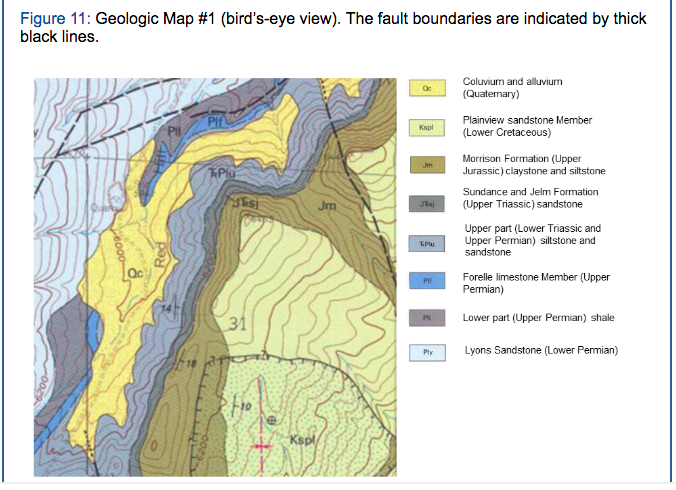Question
1. What type of contact is between the Ridpath Sandstone and the Kavalier Shale? How did you determine this? (Refer to the Geologic Time Scale,
1. What type of contact is between the Ridpath Sandstone and the Kavalier Shale? How did you determine this? (Refer to the Geologic Time Scale, which is Figure 1 in the Geologic Dating lab, to help you.)
2. The Gem Fault dips 45 degrees southeast. What kind of fault is this? Explain your reasoning. (Refer to the Geologic Time Scale, which is Figure 1 in the Geologic Dating lab, to help you.)
3. The Stohr Fault is vertical (90? dip). What kind of fault is it? Explain your reasoning.
4. Which fault is older: the Stohr Fault or the Gem fault? How can you tell? (Refer to the Geologic Time Scale, which is Figure 1 in the Geologic Dating lab, to help you.)
5. Describe the geologic history of this area (list from youngest to oldest). Include all depositional events (the deposition of the rock formations), development of unconformities, and faulting.
10. (youngest):
9.
8.
7.
6.
5.
4.
3.
2.
1. (oldest):
Map 2 (Figure 12)
1. What is the oldest geologic unit present on the map? (Refer to the Geologic Time Scale, which is Figure 1 in the Geologic Dating lab, to help you.) What type of rock is it? When was it deposited?
2. What does the dashed line in the northwest corner of the map represent? Refer to Figure 10 in this lab to help you.
3. What does the pink line in the southeast corner of the map represent? How do you know?
4. Are there any unconformities on this map? If so, what geologic units border them, and what time span(s) do they cover?
5. The topography of almost every region reflects an adjustment between the dominant surficial processes and the underlying lithology. Knowing this, describe the outcrop pattern of the Morrison Formation compared to the Plainview sandstone Member (Hint: look at the spacing of the contour lines). What do you think controls the way these two rock bodies appear in outcrop?

 ?
?
2. Answer the questions on the Exercise 1 Data Sheet. AN Stohr Fault Gem Fault Tertiary Duncan Basalt Jurassic Adams Sandstone Triassic Yamoto Sandstone Permian Austen Siltstone Carboniferous Erving Limestone Devonian Kavalier Shale Cambrian Ridpath Sandstone Figure 11: Geologic Map #1 (bird's-eye view). The fault boundaries are indicated by thick black lines. Figure 11: Geologic Map #1 (bird's-eye view). The fault boundaries are indicated by thick black lines. Plu Jksj 31 Kspl Jm Kapl Jm Jasi T.Plu PH Coluvium and alluvium (Quaternary) Plainview sandstone Member (Lower Cretaceous) Morrison Formation (Upper Jurassic) claystone and siltstone Sundance and Jelm Formation (Upper Triassic) sandstone Upper part (Lower Triassic and Upper Permian) siltstone and sandstone Forelle limestone Member (Upper Permian) Lower part (Upper Permian) shale Lyons Sandstone (Lower Permian)
Step by Step Solution
3.36 Rating (168 Votes )
There are 3 Steps involved in it
Step: 1
MAP 1 1 This is a faulted contact an Unconformity surface Because a Cambrian lithology came into con...
Get Instant Access to Expert-Tailored Solutions
See step-by-step solutions with expert insights and AI powered tools for academic success
Step: 2

Step: 3

Document Format ( 2 attachments)
635de49036eb3_179756.pdf
180 KBs PDF File
635de49036eb3_179756.docx
120 KBs Word File
Ace Your Homework with AI
Get the answers you need in no time with our AI-driven, step-by-step assistance
Get Started


